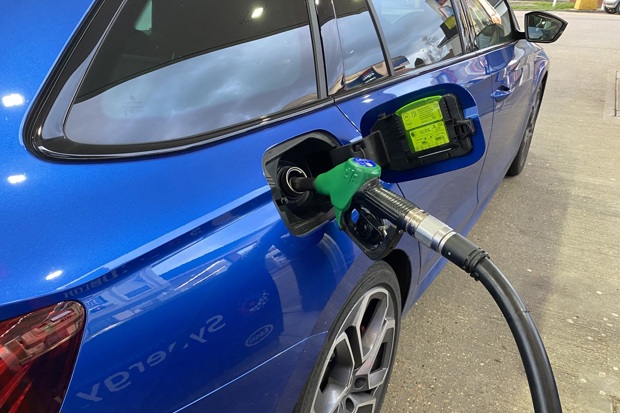Petrol and diesel prices continue to rise

The price of both petrol and diesel has risen by 10p a litre so far in 2024, adding £5.50 to the average cost of filling up.
What’s more, the margins fuel retailers earn on fuel sales are going up too, leading the RAC to call for the Government and the Competition and Markets Authority (CMA) to address "glaring issues" with fuel retailing.
In April alone, unleaded went up 3p a litre, to an average of 149.95p. Diesel went up by 2p a litre, to an average of 157.76p.
It means the cost of filling the average 55-litre tank of petrol is now £82.47 – up £1.70 in a month – while a tankful of diesel is now £86.77.
The figures were revealed in the latest RAC Fuel Watch data, which the motoring organisation says also indicate a dramatic increase in retailer margins.
While the long-term average margin for petrol and diesel is 8p a litre, the margin on unleaded is currently 9.5p a litre – and the diesel margin is a staggering 17.5p a litre, up 6p in April alone.
The RAC says these issues have been brought to light since the UK’s largest fuel retailers first began voluntarily publishing fuel prices on a daily basis last September.
"Drivers are once again having to dig deep just to go about their daily lives," says RAC fuel spokesman Simon Williams.
Williams explains that some of this is down to the oil price and the pound-to-dollar exchange rate making wholesale petrol more expensive to buy, but points out that it’s very apparent that retailers are making massive margins on diesel.
"To put this into perspective, the wholesale price of diesel has been lower than petrol since the middle of April, yet diesel is nearly 8p a litre dearer at the pump. If retailers were treating drivers fairly, this gap would be starting to close, instead of getting wider," he adds.
As a result, the RAC wants the Government and CMA to "get to grips with unfair retailer margins" via the imminent ‘Pump Watch’ scheme and the creation of a monitoring body.
The CMA’s warning shot about higher retailer margins at the end of March appears to have fallen on deaf ears, meaning drivers are once again being seriously overcharged for diesel.
The RAC also adds points out that there is a vast difference between the highest and lowest prices at two big oil companies, BP and Shell.
For petrol at BP, the price spread between low and high was 24p, while it was 28p at Shell. The spread between diesel was also 28p at Shell – and 30p between the cheapest and most expensive prices at BP.
But petrol retailers have defended the industry, claiming they are operating on razor thin margins in a highly competitive market.
"It is disappointing that we are constantly having to devote time and resource to correcting the inaccurate narrative offered by some commentators about pump price increases," says Gordon Balmer of the Petrol Retailers Association.
"We are doing all we can through the appropriate policy channels to address this issue, while others would prefer to offer criticism without taking the time to understand how the industry works. Retailers have had to contend with various fixed cost increases, not least from business rates, forecourt crime and energy prices, all while trying to keep their prices as low as possible for their customers."

A misfuelling service didn't remove all the fuel - can I claim against them?


